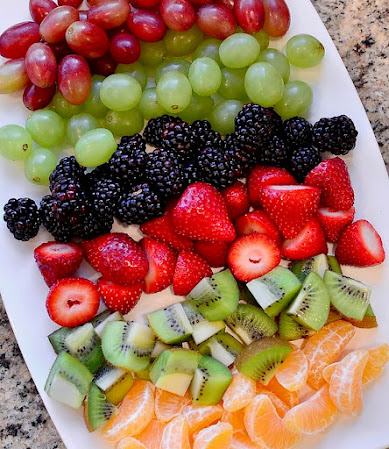3 June, 2024
0 Comments
2 categories
At its core, a salad is a dish made primarily of a mixture of raw or cooked vegetables, fruits, grains, proteins, and/or other ingredients, often served cold or at room temperature. The ingredients can be chopped, sliced, shredded, or arranged whole, depending on the recipe and presentation style. Additionally, salads are typically dressed with a sauce or dressing, which can range from simple vinaigrettes to creamy dressings, to enhance flavor and texture.
Although leafy greens like lettuce or spinach are frequently used as the foundation of salads, they can also contain a wide range of other ingredients like avocado, bell peppers, onions, tomatoes, cucumbers, carrots, grains like rice or quinoa, proteins like grilled chicken or tofu, cheese, herbs, and more. Salad ingredient combinations can differ significantly based on dietary restrictions, cultural preferences, and individual taste preferences.
Salads can be tailored to meet dietary requirements and personal preferences, which is why they are so versatile. They can be simple and light or hearty and filling, and they can be served as an appetizer, main course, or side dish. Salads are full of options for tasty and healthful eating, whether they are eaten as a cool summer salad, a wholesome meal option, or a creative culinary creation.
Salads are a versatile and healthy food option that can be customized to suit individual tastes and dietary preferences. Here are some things about salads:
Nutrient-rich:
Salads are frequently a great source of antioxidants, vitamins, and minerals—especially when they contain a range of vibrant veggies and leafy greens.
Low in calories:
Due to their low calorie content, salads are a popular option for people trying to lose weight or get healthier in general.
Variety:
There are countless variations of salads, ranging from simple green salads to more complex options with a mix of vegetables, fruits, nuts, seeds, proteins, and grains.
Customizable:
Salads have the great advantage of being easily adaptable to individual preferences and dietary needs. Depending on your tastes, you can add or remove ingredients.
Healthy fats:
To add heart-healthy fats to your salad, try adding avocado, nuts, seeds, or olive oil. These ingredients are also good sources of antioxidants.
Protein:
A salad can be made more satisfying and full by adding protein sources like hard-boiled eggs, tofu, beans, or grilled chicken.
Dressings:
The dressing can make or break a salad. While store-bought dressings are convenient, making your own allows you to control the ingredients and avoid added sugars and preservatives.
Texture:
A well-balanced salad includes a variety of textures, such as crunchy vegetables, creamy avocado, and chewy grains or nuts, which add interest and satisfaction to each bite.
Seasonality:
Making salads with in-season ingredients guarantees the freshest and most flavorful results. In addition, seasonal produce is typically less expensive and better for the environment.
Cultural variations:
Salads are a global dish, and different cultures have their own unique takes on salad recipes. For example, Greek salad, Caesar salad, and tabbouleh are all popular variations with distinct flavor profiles.
Meal versatility:
Salads can be served as a side dish, appetizer, or main course, depending on the ingredients and portion size. They’re suitable for any meal of the day, from breakfast to dinner.
Health benefits:
Regularly consuming salads as part of a balanced diet has been linked to numerous health benefits, including improved digestion, weight management, reduced risk of chronic diseases like heart disease and diabetes, and increased energy levels.
Whether you’re a fan of classic salads or enjoy experimenting with new ingredients and flavor combinations, there’s no denying that salads are a delicious and nutritious addition to any meal.
Let’s delve a bit deeper into the world of salads:
Cultural Significance:
For centuries, salads have been a staple of food cultures all over the world. Salads, such as the tabbouleh from the Mediterranean and the papaya salad from Asia, are a reflection of the varied cultural heritage and culinary customs of various regions.
Salad Greens:
Leafy greens such as mixed greens, kale, arugula, spinach, and lettuce often serve as the foundation of salads. The distinct flavor, texture, and nutritional characteristics of each variety add to the salad’s overall appeal and healthfulness.
Seasonal Ingredients:
In addition to improving the taste and freshness of salads, embracing seasonal produce helps local farmers and lessens the environmental effect of food transportation.
Grain Salads:
Beyond leafy greens, salads can feature grains like quinoa, bulgur, farro, or couscous as a hearty and nutritious base. These grain salads are particularly popular for their filling nature and ability to be served warm or cold.
Fruit Salads:
Combining fresh fruits with greens or other ingredients creates vibrant and refreshing salads. Fruit salads offer a balance of sweet and tangy flavors, making them a favorite during the warmer months or as a light dessert option.
International Influences:
The blending of flavors and ingredients in salads is a result of the globalization of food. International influences lend depth and complexity to classic salad recipes, such as the corn salsa made in Mexico and the peanut dressing influenced by Thailand.
Proper Pairing:
Thoughtful ingredient pairings can improve a salad’s flavor. In order to create a pleasing balance that pleases the palate, take into account complimentary flavors, textures, and colors.
Herbs and Spices:
Salads can have a stronger flavor and aroma when fresh herbs like parsley, cilantro, basil, and mint are added. Additionally, adding spices like cumin, paprika, or sumac can give salad dressings or toppings more flavor and warmth.
Presentation:
Salads are no exception to the rule that food aesthetics are important to the enjoyment of eating. A thoughtful combination of colorful ingredients and garnishes can create a visually appealing and inviting salad.
Health Consciousness:
Salads are now a popular option for people looking for nutrient-dense meal options because of the increasing focus on health and wellness. Restaurants and food establishments frequently provide a variety of salad options to satisfy customers who are health-conscious.
Sustainability:
Selecting environmentally friendly and sustainable ingredients for salads, like organic greens or locally grown produce, supports a more sustainable food system and is in line with environmentally conscious eating practices.
Experimental Creations:
There are countless options when it comes to creating salads when creativity and experimentation are welcomed. Take no fear in experimenting with unusual pairings or unusual components to uncover novel taste sensations.
Evolution:
Over time, the idea of salads has changed. In the past, salads were straightforward meals made mostly of raw vegetables dressed with vinegar, oil, or salt. They now include a diverse array of ingredients, flavors, and cooking methods, reflecting shifting consumer preferences and advancements in the culinary arts.
Texture Contrast:
A crucial component of salad composition is texture. Eating is made more interesting and complex when components with different textures are combined, such as crisp lettuce, crunchy croutons, creamy avocado, and chewy dried fruit.
Temperature Variations:
Warm salads are also popular, though most salads are served cold or at room temperature. Warm salads are a satisfying and cozy dinner option, particularly in the cooler months. They typically consist of cooked vegetables, grains, or proteins served on top of a bed of greens.
Portable and Packable:
For lunches that are packed or consumed on the run, salads are a great choice. They’re handy for hectic schedules, picnics, work lunches, and outdoor get-togethers because they can be put together ahead of time and store in portable containers.
Salad Bowls:
Salad bowls, as opposed to conventional plates, have become more and more common in recent years. Salad bowls make it easier to mix and toss ingredients and provide a larger surface area for creative presentation.
Salad Bars:
In restaurants, cafeterias, and grocery stores, salad bars are a common sight. They let patrons build their own salads by selecting from an assortment of fresh ingredients and dressings. Salad bars provide a quick and engaging way to eat while accommodating a variety of dietary needs and tastes.
Health Awareness:
With an increasing focus on health and wellness, salads are often perceived as a nutritious and wholesome meal choice. Many people opt for salads as a way to incorporate more vegetables, fruits, and whole grains into their diet, while also reducing their intake of processed foods and added sugars.
Culinary Creativity:
Chefs and home cooks alike enjoy experimenting with innovative salad recipes, pushing the boundaries of flavor combinations and presentation techniques. From deconstructed salads to molecular gastronomy-inspired creations, there’s no limit to the creativity that can be applied to salad-making.
Global Influences:
Salads are a culinary canvas for exploring diverse flavors and ingredients from around the world. Global influences can be seen in salads like Japanese seaweed salad, Middle Eastern fattoush, or South American ceviche salad, showcasing the richness and diversity of global cuisine.
Seasonal Transitions:
Salads are flexible meals that can be made to accommodate shifting seasonal ingredient availability. While fall and winter salads may include heartier ingredients like root vegetables, squash, and citrus fruits, spring and summer salads frequently feature fresh, colorful produce like tomatoes, cucumbers, and berries.
Around the world, salads never fail to entice the palate and stimulate culinary creativity, whether they are eaten as a light side dish, a filling supper, or a creative culinary creation.
Salads are a staple of healthy eating around the world and continue to evolve and adapt to modern tastes and dietary preferences, whether they are eaten as a light lunch, a side dish, or a main course.
Category: Home, Vegetarian





